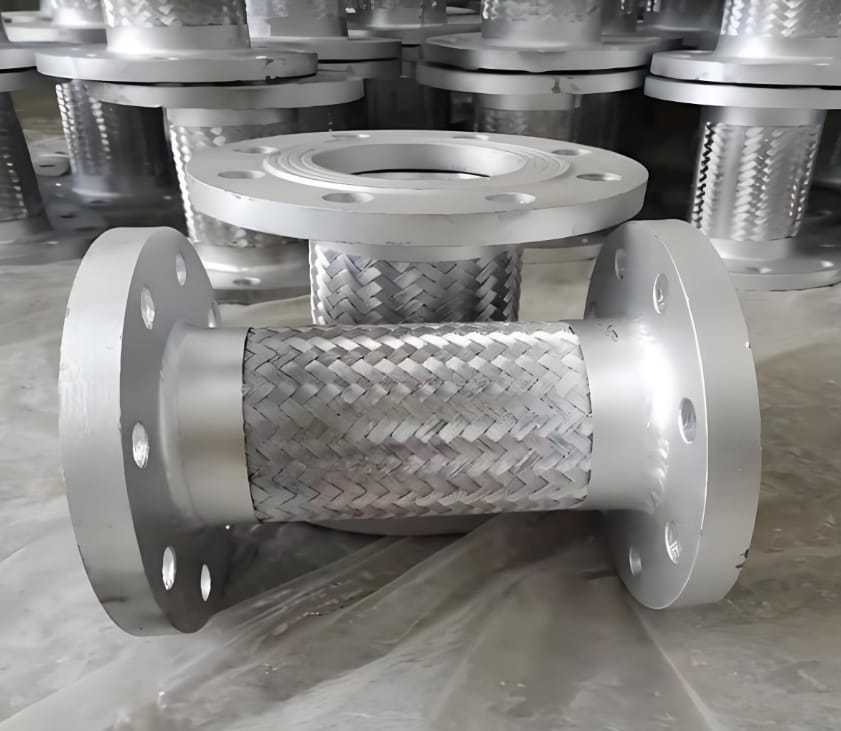Rubber vs. Metallic Pipe Expansion Joint in Extreme Temperatures
In industrial piping systems, temperature extremes (-40°C to 500°C) present unique challenges for pipeline integrity. This technical comparison examines the performance characteristics of rubber and metallic pipe connections under thermal stress, providing engineers and procurement specialists with data-driven selection criteria.
1. Material Fundamentals: Built for Different Battles
Rubber Joints (EPDM/NBR):
- Temperature range: -50°C to +150°C (special formulations up to 300°C)
- Thermal expansion coefficient: 150-200 x 10⁻⁶/°C
- Natural vibration dampening: 85-92% energy absorption
Metallic Joints (Stainless Steel/Carbon Steel):
- Temperature range: -200°C to +800°C
- Thermal expansion coefficient: 10-17 x 10⁻⁶/°C
- Structural rigidity: <5% vibration transmission loss
2. High-Temperature Showdown (>150°C)
Metallic Advantages:
- Maintain structural integrity up to 800°C
- No degradation from prolonged heat exposure
- Suitable for steam lines (typical 200-400°C operations)
Rubber Limitations & Solutions:
- Standard EPDM degrades above 150°C
- Advanced Solutions:
• Fluorocarbon (FKM) compounds: 200°C continuous use
• Ceramic-impregnated rubber: 300°C peak resistance
• Multi-layer designs with thermal barriers
Case Study:
A Kuwait oil refinery reduced flange leakage by 73% after switching to FKM-based rubber expansion joints in 280°C transfer lines, combining heat resistance with vibration control.


3. Cryogenic Challenges (<-40°C)
Rubber Performance:
- Standard NBR becomes brittle below -20°C
- Low-Temp Solutions:
• Silicone rubber: -60°C flexibility
• Arctic-grade EPDM: -55°C TR10 rating
• Multi-axis movement accommodation
Metallic Risks:
- Carbon steel embrittlement below -29°C
- Requires expensive austenitic alloys (304/316L SS)
- Thermal contraction mismatches:
» 30m pipeline at -50°C contracts 42mm (steel) vs. 300mm (rubber)
LNG Plant Example:
Silicone rubber joints in -162°C LNG loading arms eliminated frost-induced flange failures experienced with stainless steel slip joints.
4. Thermal Cycling Endurance
Rubber’s Secret Weapon:
- Accommodates 15-20mm/m thermal movement
- 10,000+ cycles at ΔT=120°C (ASTM D395 testing)
- Self-realigning memory reduces maintenance
Metallic Fatigue Factors:
- Stress concentrations at weld points
- Creep deformation above 400°C
- Requires expansion loops/guides (3-5x space vs rubber joints)
Power Plant Data:
Combined cycle units using rubber joints reported 60% fewer thermal cycle-related maintenance incidents compared to all-metal configurations.
5. Corrosion: The Hidden Multiplier
High-Temp Corrosion:
| Material | 300°C H₂S Corrosion Rate |
|---|---|
| Carbon Steel | 2.5 mm/year |
| 316 Stainless | 0.8 mm/year |
| FKM Rubber | 0.0 mm/year |
Low-Temp Salt Attack:
- Rubber joints resist de-icing salt corrosion
- Stainless steel requires passivation treatments
6. Cost-Benefit Analysis
Installation Costs:
- Rubber joints: 850−850−1,200/m (ready-to-install)
- Metallic expansion joints: 2,400−2,400−5,000/m (plus guides/anchors)
Lifetime Value:
| Factor | Rubber | Metallic |
|---|---|---|
| Maintenance Cycle | 8-10 years | 3-5 years |
| Energy Savings | 12-18% | 0-2% |
| Failure Impact | Leak | Catastrophic |
Conclusion: Smart Material Pairing
Modern engineering favors hybrid approaches:
- Use metallic joints in >300°C constant heat zones
- Deploy advanced rubber joints in:
- Thermal cycling areas (-50°C to 250°C)
- Vibration-prone/corrosive environments
- Space-constrained installations
Industry Trend: 68% of new petrochemical projects now combine both technologies, optimizing capital and operational costs (McKinsey 2023 Pipeline Report).
JOINTIB has been providing cost-effective and durable rubber expansion joints and duckbill check valves . Our products are very resistant to corrosion and breakage under harsh conditions. For more information about our products, and to inquire about pricing and availability, please contact us today. You can contact us by filling out a form on our website or writing email to sales@jointib.com
Send Your Question
Recent Post
-
Rubber Expansion Joint Manufacturing Process in China
-
Chinese Rubber Joint Manufacturer Establishes Strong Foothold in Australian Market
-
Chinese Rubber Expansion Joints Gain Popularity in the Italian Market
-
Advantages of Dual-Sphere Rubber Expansion Joints
-
Rubber vs. Metallic Pipe Expansion Joint in Extreme Temperatures

PEW
Hi, I’m the author of this post, and I have been in this field for more than 10 years. If you want to get more info about industrial pipe rubber expansion joints, feel free to ask me any questions.
